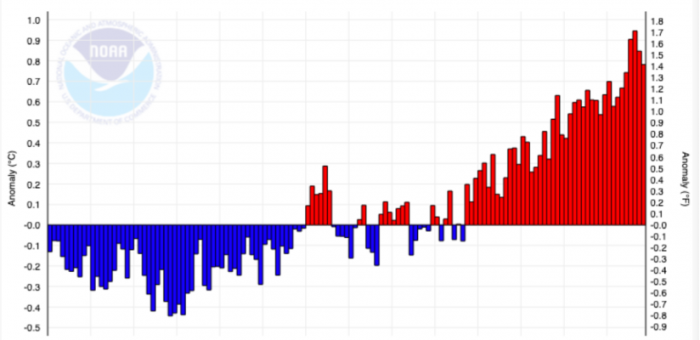Impromptu statement on global warming and intergenerational equity
Yesterday in the legislature I rose during Members’ statements to give an impromptu statement on global warming and intergenerational equity. The BC Liberals, as part of their petulant shenanigans during the last day of sitting of the BC Legislature, decided that they would boycott the two minute statements that occur everyday. As a consequence, several members scrambled to fill their normal speaking slots.
Below I reproduce the video and text of this statement.
Video of Statement
Text of Statement
A. Weaver: It gives me a great pleasure to rise, on this, the last day of the session, to deliver a two-minute statement.
Prior to coming up to the Legislature today, I did what I often do. I took a look at the seasonal climate forecast for this part of the world. The seasonal climate forecast for the summer of 2019 in British Columbia is this: extraordinarily high probabilities of higher than normal temperatures and dryer than normal conditions. What does that lead to? That leads to yet another suite of conditions that will lead to forest fires in British Columbia.
I remind members that back in 2004, Nathan Gillett, Mike Flannigan, Francis Zwiers and I published a paper in Geophysical Research Letters where we identified the fact that we could detect and attribute the increased area burnt in Canada of forest fires directly to human activity. Since that time, similar papers have come out for Siberia, for the eastern U.S., for Europe and elsewhere. We know that the increasing forest fires in our country is a direct consequence of global warming.
In fact, the science of global warming goes back to 1824, when Jean-Baptiste Joseph Fourier was the first to recognize that the atmosphere was transparent to incoming solar radiation but was effective at blocking outgoing longwave radiation and kept the surface area of the planet warmer to allow life to flourish.
In 1861, John Tyndall, best known for his incredible sideburns, actually developed an amazing instrument that allowed us to detect the different radiative absorption properties of a diverse array of greenhouse gases.
In 1896, Svante Arrhenius, a famous Swedish Nobel laureate was the first to actually directly calculate the increasing warming associated with increasing carbon dioxide levels.
And in 1936, George Calendar was the first to make multi-century predictions as to what would happen as a direct consequence of increasing carbon dioxide.
In fact, the very first national assessment was done in 1979 — the year they graduated from high school — where Jule Charney from MIT was tasked with assessing what human contribution to climate change was. At that time, the best scientific estimate of the warming associated with increasing greenhouse gases was between 1½ and 4½ for a doubling of carbon dioxide. That number has not changed for 35 years of scientific research.
As we leave to the summer, I ask members to consider this. The question of global warming boils down to a single question. Do we the present generation owe it to future generations, in terms of leaving behind to them the quality environment that we were blessed with inheriting?
Intergenerational equity is the question — for those who make the decisions today don’t have to live the consequences of the decisions they made if the next generation will. I suspect those in the gallery, those children in the gallery looking down upon us today, would suggest that indeed it behooves us to put intergenerational equity front and centre in our decision-making.




2 Comments
Spot on, Andrew, on what it boils down to: inter generational equity. We use to call coal lovers climate skeptics but now I think of them simply as greedy selfish people, the sort of people who evade their taxes. Keep up the great work. Best regards from an old mate.
Thankyou, Andrew!